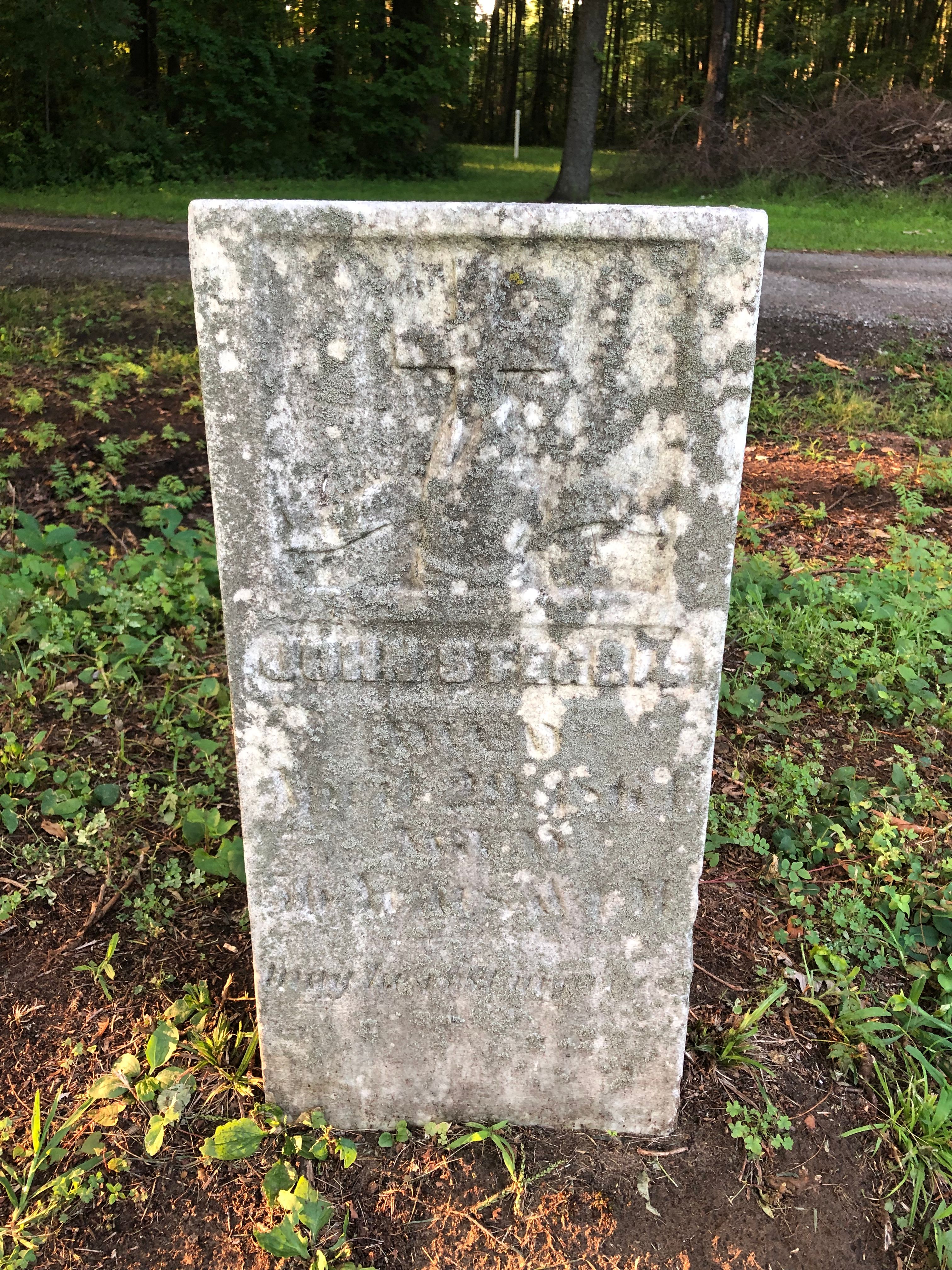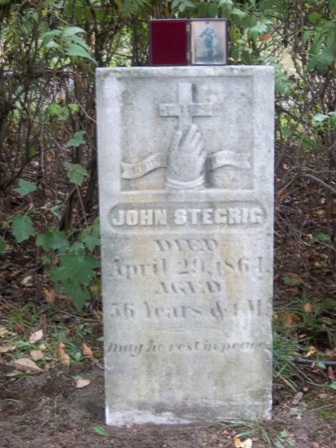John (Jean) was born in the tiny Swiss mountain village of Pleigne, near Pleigne, just miles from the border with the French Free Country (Franche Comte). As was common in his village, his mother and father were not married to each other for several years after his birth. There were far more women than men in the town and they were snowbound for all but four months of the year. His father, Joseph Frein, was married to another woman who was "sickly," according to many commune records, and he created a second family with Maria-Anna Stegrit. When Jean was nearly ten-years-old, his parents were finally free to marry. Shortly after, his brother Peter was born.
As a teen, Jean met Agnes Odiet from the nearby village of Movelier. Her family was quite large and Movelier had a much better economy than did Pleigne. But given the laws of the kanton in place at the time, there were significant financial penalties to just walking away and trying to start up a new life elsewhere. In the case of Pleigne, the economy was built on lumbering the forests around the village. As a commune, each family unit received an equal portion of the profits regardless of the number of members in the family. It was in the early 1850s that the small mountain villages developed an interesting concept to thin the hereditary ranks and improve the financial outlook. If an entire nuclear family: Parents, and all children, adult or otherwise, were to petition the commune for an advance on the coming season's profits, then a vote would be taken. Those families that were successful would be given tickets to Belmont, just inside France, and on to Le Havre. From there, tickets would be purchased to taken these families across the Atlantic to he US. BUT...the codacile was that no one could ever go back.
And so it was with John, Agnes and all of their children. They were successfully voted through and arrangements were make for them to travel to New Baltimore, Michigan. They would travel by train, then by steamship line, to New York, then to Buffalo, then to Detroit.
Once here, they settled in Ira Township, exceptionally close to where refugees from the French Revolution had settled.
When the dust finally settled, there was a very successful resettlement to Anchorville. Today there stands Bethuy Road right on the edge of where their family farm once stood.
Nearly 20 years later, as the steamship traffic north increased the demand for lands where the lumber companies had clear cut and moved on, a plank road was opened up to Vassar, then over to Bay City and Watrousville. Now called M-15, when that road opened it was the first well-maintained road up to the Thumb and the Saginaw valley, as opposed to ship traffic. With visions of what they could accomplish with the money that they had gathered, plans were made to move the family north. Eventually, they did leave, but by then Jean had succumbed and Agnes was unwilling to leave him behind. So their children and grandchildren moved up to Gilford in Tuscola Co, where they stayed for more than a generation or two.
This information provided by Jan Colton, Find A Grave Contributor 47844423
John (Jean) was born in the tiny Swiss mountain village of Pleigne, near Pleigne, just miles from the border with the French Free Country (Franche Comte). As was common in his village, his mother and father were not married to each other for several years after his birth. There were far more women than men in the town and they were snowbound for all but four months of the year. His father, Joseph Frein, was married to another woman who was "sickly," according to many commune records, and he created a second family with Maria-Anna Stegrit. When Jean was nearly ten-years-old, his parents were finally free to marry. Shortly after, his brother Peter was born.
As a teen, Jean met Agnes Odiet from the nearby village of Movelier. Her family was quite large and Movelier had a much better economy than did Pleigne. But given the laws of the kanton in place at the time, there were significant financial penalties to just walking away and trying to start up a new life elsewhere. In the case of Pleigne, the economy was built on lumbering the forests around the village. As a commune, each family unit received an equal portion of the profits regardless of the number of members in the family. It was in the early 1850s that the small mountain villages developed an interesting concept to thin the hereditary ranks and improve the financial outlook. If an entire nuclear family: Parents, and all children, adult or otherwise, were to petition the commune for an advance on the coming season's profits, then a vote would be taken. Those families that were successful would be given tickets to Belmont, just inside France, and on to Le Havre. From there, tickets would be purchased to taken these families across the Atlantic to he US. BUT...the codacile was that no one could ever go back.
And so it was with John, Agnes and all of their children. They were successfully voted through and arrangements were make for them to travel to New Baltimore, Michigan. They would travel by train, then by steamship line, to New York, then to Buffalo, then to Detroit.
Once here, they settled in Ira Township, exceptionally close to where refugees from the French Revolution had settled.
When the dust finally settled, there was a very successful resettlement to Anchorville. Today there stands Bethuy Road right on the edge of where their family farm once stood.
Nearly 20 years later, as the steamship traffic north increased the demand for lands where the lumber companies had clear cut and moved on, a plank road was opened up to Vassar, then over to Bay City and Watrousville. Now called M-15, when that road opened it was the first well-maintained road up to the Thumb and the Saginaw valley, as opposed to ship traffic. With visions of what they could accomplish with the money that they had gathered, plans were made to move the family north. Eventually, they did leave, but by then Jean had succumbed and Agnes was unwilling to leave him behind. So their children and grandchildren moved up to Gilford in Tuscola Co, where they stayed for more than a generation or two.
This information provided by Jan Colton, Find A Grave Contributor 47844423
Family Members
Advertisement
Records on Ancestry
Sponsored by Ancestry
Advertisement






